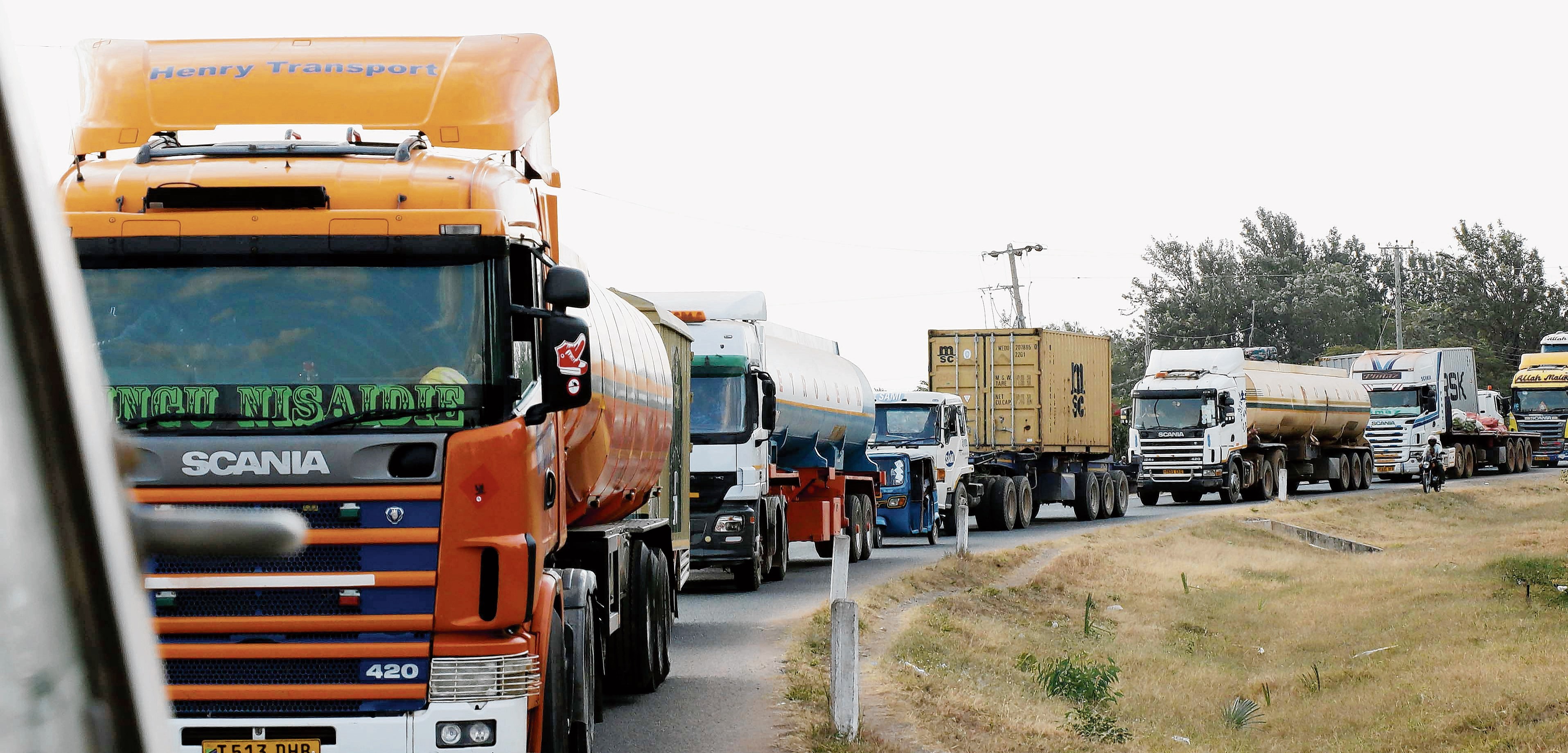Prime
Why lorry owners are losing business on the Central Corridor

Lorries queue at a weighbridge along the Central Corridor in Singida Region. PHOTO | FILE
What you need to know:
- Introduction of a Through Bill of Lading (TBL), in particular, is reported to have dealt a major blow to the once-lucrative mode of cargo transportation in the region
Arusha. Lorry owners in Tanzania are losing business on the Central Corridor following the introduction of new rules by major shipping lines.
The introduction of a Through Bill of Lading (TBL), in particular, is reported to have dealt a major blow to the once-lucrative mode of cargo transportation in the region.
An oversight team of the East African Legislative Assembly (Eala) on trade facilitation now wants a firm action taken on the matter.
It urged the Tanzanian government to provide a competitive environment for the lorry owners “to be able to compete with the giant shipping lines”.
The fall out in business among the lorry owners is contained in a recent report tabled before the regional Assembly at its sitting in Nairobi.
It followed an oversight activity on the trade facilitation in the region’s major ports of Dar es Salaam and Mombasa.
Members of Eala Committee on Communication, Trade and Investment said the new shipping rules were a setback for cargo transportation.
“Lorry owners are losing out on business due to the introduction of a TBL approach by the shipping lines,” they said.
TBL is a signed agreement between the shipper and the carrier when the shipment of goods involves multiple transportation modes.
Unlike other Bills of Ladings (BoLs), the TBL permits the carrier to pass the shipment via different modes of transportation as required by the cargo. The ‘through’ in Through Bill of Lading shows that it is an umbrella Bill of Lading that can comprise other individual bills of lading. While a Bill of Lading usually includes only one aspect of transportation of goods from the origin to the final destination, a Through Bill of Lading includes the complete process including domestic and international transport. It also includes the transportation details agreed upon by the seller and carrier, such as any specific processes or transport terms.
The lawmakers argued that unless the lorry owners are assisted to compete with the shipping lines, their businesses will continue to stall.
It is estimated that there are more than 25,000 lorries doing cargo transportation between the port of Dar es Salaam and the hinterland.
The vehicles are owned by over 1,000 members of Tanzania Truck Owners Association (Tatoa) which employs more than 80,000 individuals directly and 200,000 indirectly.
It is further estimated that Tato members serve 95 percent of cargo transportation from the port of Dar es Salaam, leaving 5 percent to the rail.
In terms of metric tonnes, in 2019, the East African Community (EAC) bloc imported 2.3 million tonnes against 3.1 million tonnes imported by the Southern Africa Development Community Sadc) region.
However, the legislators in the Committee which visited the Dar es Salaam port were informed that the lorry owners were losing out business due to introduction of BoL.
Other challenges facing the Central Corridor include absence of an operational Regional Electronic Cargo Tracking System (Rects).
The Central Corridor is a transport and trading route linking the Dar es Salaam port with the upcountry regions as well as landlocked states of Burundi, Rwanda, Uganda and the DR Congo.
The report said the electronic cargo monitoring system introduced has removed unnecessary Customs checkpoints but has not been unified.
“Each partner state under the Central Corridor operates an independent electronic cargo tracking system currently,” said the report, seen by The Citizen.
The Committee urged the EAC secretariat, the executive organ of the Community, to develop a unified electronic cargo tracking system along the route.
It was also proposed that the Kabanga/Kobero One Stop Border Post (OSBP) between Tanzania and Burundi should operate for 24 hours.
This, the lawmakers insisted, would lead to decongestion caused by limited operational time at the shared border posts between the two countries.
The opening up of the Mukambo and Sakania borders in DR Congo for lorries from fellow EAC member states is seen as a boost to the flow of traffic.
However, transport economists say this has been hindered by the long duration taken in the clearance of documents from DR Congo to Dar es Salaam.
The documentation process takes up to two to three weeks since the paperwork is carried out from Kinshasa due to lack of an integrated system.
“This results in a demurrage burden to the transporter as it leads to delays in the return of empty containers,” the report, tabled before Eala, added.
Delays of the containers compounds the situation because it leads to low utilisation on the side of the shipping lines.
This, it was found out, makes importation through the port of Dar es Salaam expensive “to the consignees and the economy”.




